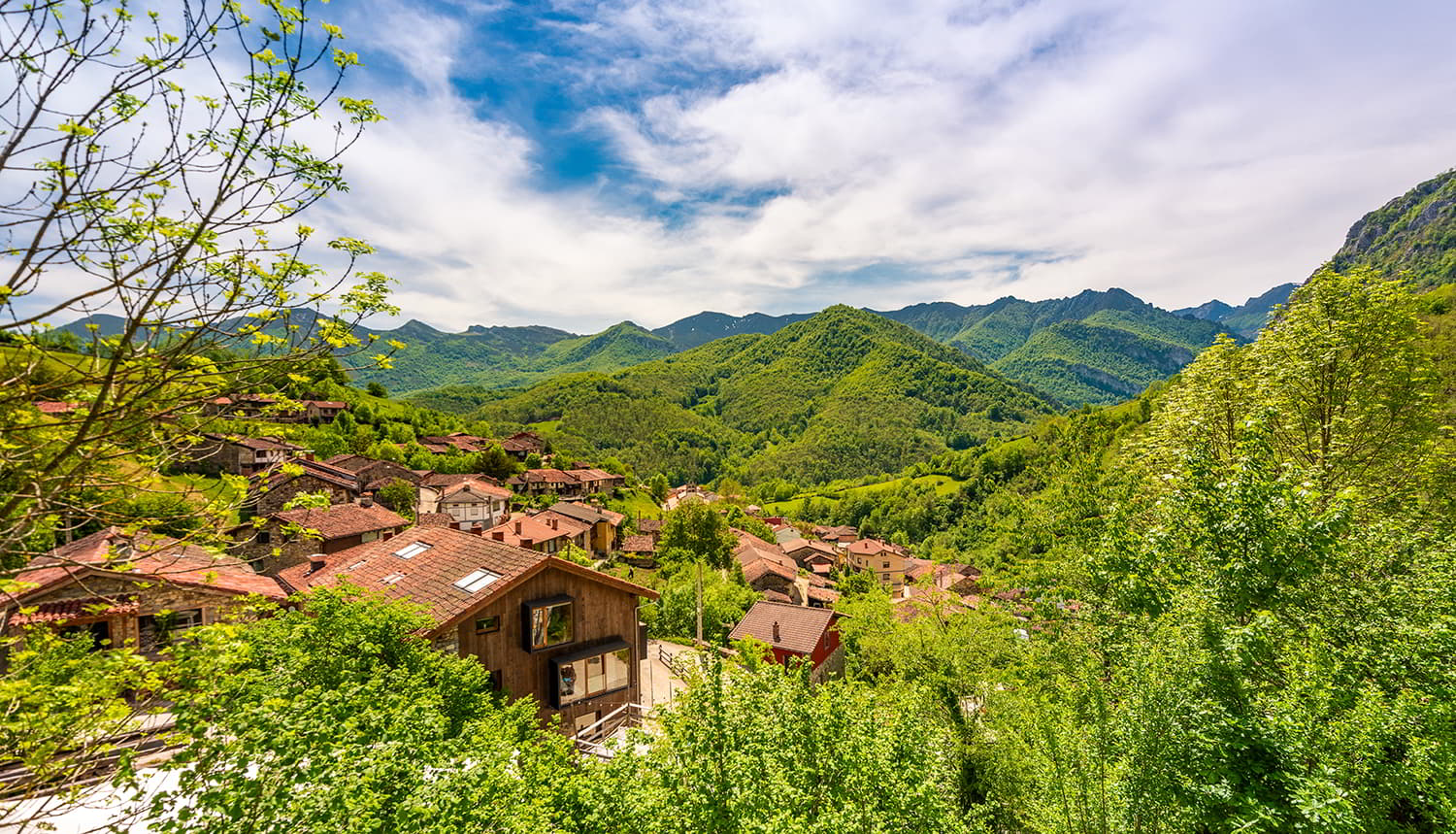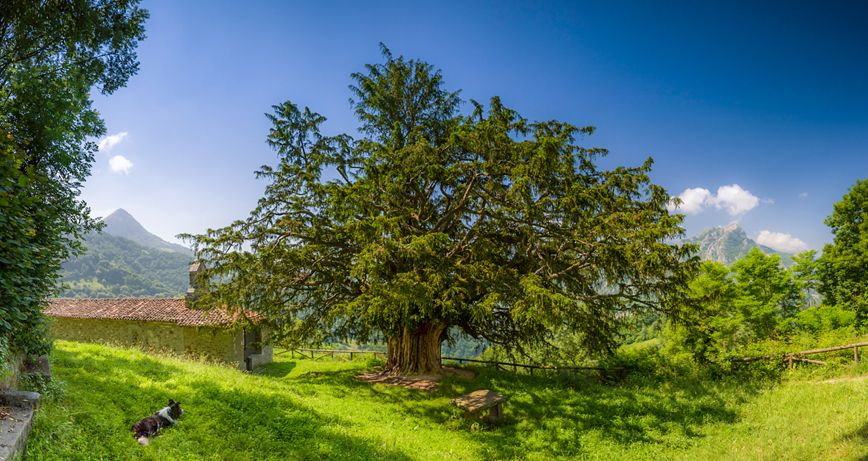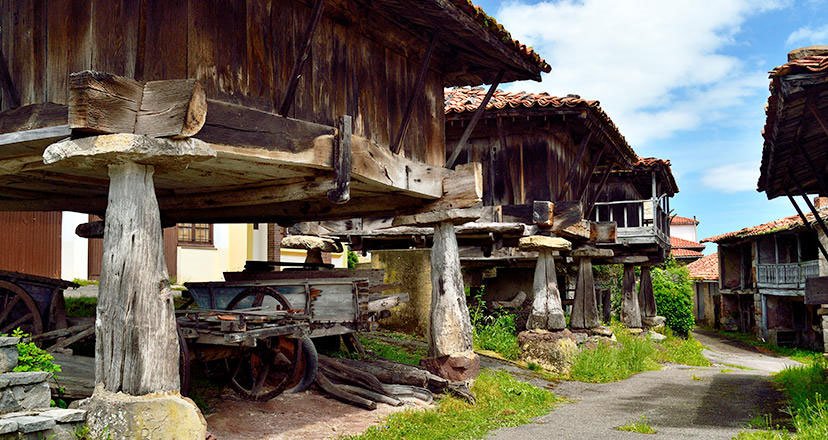Back Top 10 things to see and do in Piloña
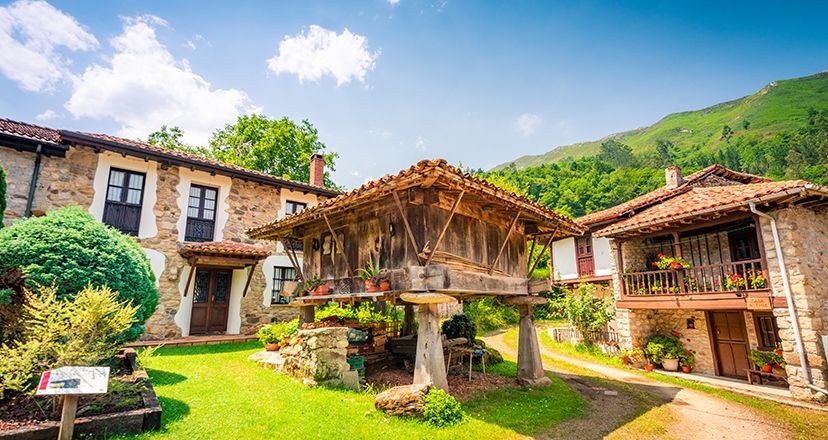
The 10 most interesting things to see and do in Piloña
Piloña is one of those places that offers many corners and attractions: beautiful villages, rivers with history, hiking trails, mountains and valleys, Asturcones, prehistory and much more.
Piloña is one of those places that you will never tire of visiting, because it always has something new to offer or something new to discover. With villages that are a portrait of another time, rivers that have made history, waterfalls to fall in love with, routes to get fit, or valleys and mountains to lose your senses, Piloña is the territory of Asturcones, and of the best mineral waters you can find, without forgetting that it is one of the great reserves of the European Neanderthal, thanks to the important prehistoric discoveries in the Sidrón cave.
In Piloña there are many different things to do: you can take a wonderful ethnographic route or a hiking route, or visit beautiful and hospitable villages, or visit the Sanctuary of the Virgen de la Cueva, or enjoy excellent food in any of the many places in this municipality. And of course, a must is to go up to the Sueve, to the Espineres sheepfold, to enjoy the images that the Asturcones will give you in freedom, in one of the epic mountains of the Asturian orography.
For all these reasons and many more, here are the 10 best things to see and do in Piloña!
L'Infiestu, a capital with lots of charm
The capital of the council, L'Infiestu, is a peaceful village, which is easy to walk around, and which has hidden corners, facing the river Piloña, a true fluvial axis that vertebrates the village around its banks.
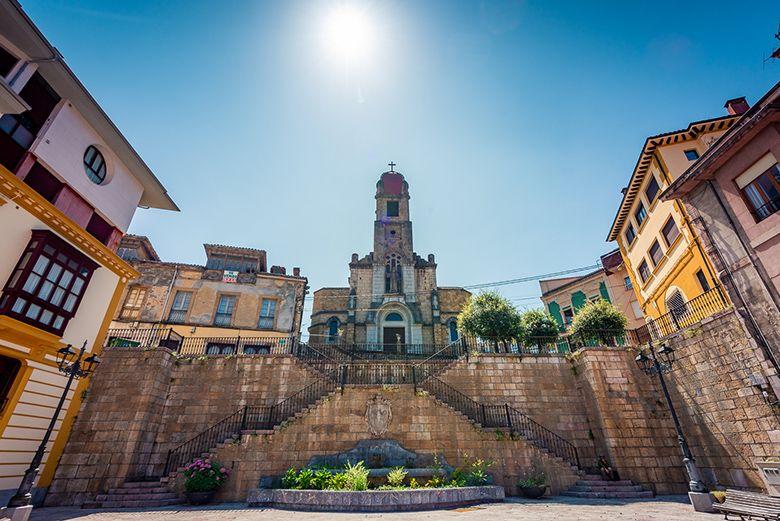
Between bridges and footbridges, life in L'Infiestu is very pleasant, largely thanks to the sense of hospitality of its inhabitants, who make every day a celebration. The Calle del Quesu, the "puente vieyu" (old bridge), the main square, the parish church, the town hall itself, or the Casa del Tiempo (House of Time) are places and references not to be missed on a visit to the capital of Piloña.
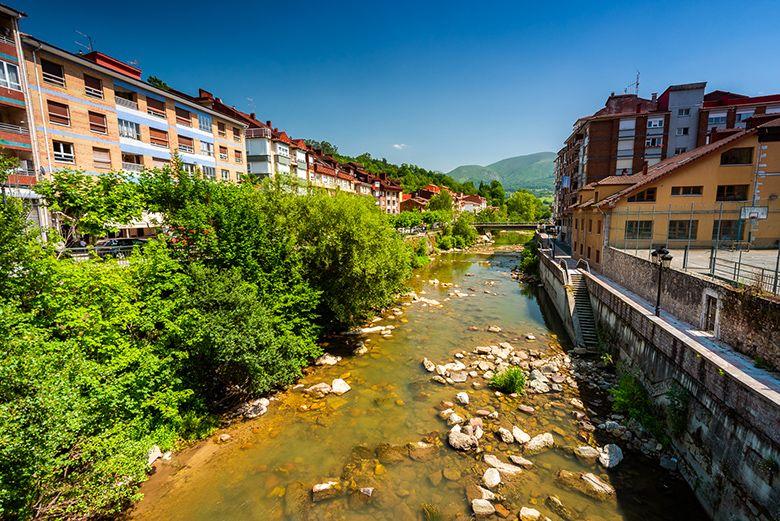
In the Casa del Tiempo you can see one of the best collections of antique clocks in Spain, and in the same building you will find the permanent exhibition entitled "Los trece del Sidrón", where the prehistoric finds from the famous Sidrón Cave, located in the village of Vallobal, are shown in detail.
Furthermore, this world capital of the hazelnut has lively festivals, including the festival dedicated to this succulent fruit, or the famous canoeing descent of the river Piloña, a competition whose start is a moment of great beauty and plasticity.
In short, L'Infiestu is a town to stop and rest, in peace and quiet, allowing oneself to be seduced by the light whisper of a mythical river in the history of Spanish canoeing...
La Virgen de la Cueva, a very fluvial sanctuary
The Sanctuary of the Virgen de la Cueva, just two kilometres from L'Infiestu, is a very special and different place of worship. Its natural surroundings are ideal for enjoying the river, relaxing, sunbathing, practising sport, walking, eating, having a vermouth, etc.
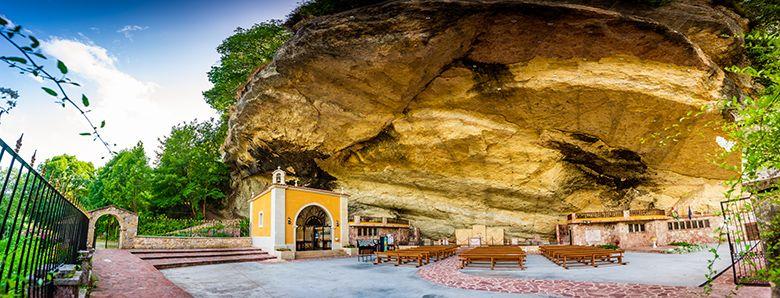
Furthermore, the Sanctuary, whose Marian devotion has its roots more than a thousand years ago, is set on a specular rock, taking advantage of the orography of a unique terrain. The exuberant vegetation, and the fact that it is at the foot of the river, make up a harmonious whole, very eye-catching, and inspiring peace and tranquillity.
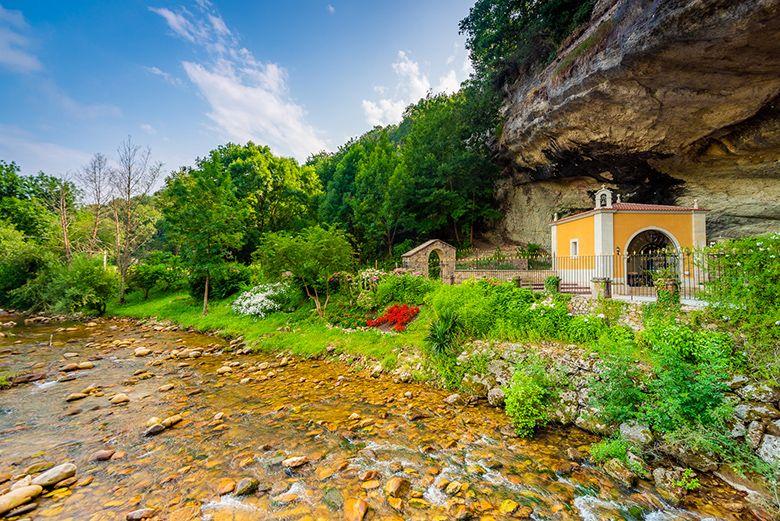
Linked to the history of the kingdom of Asturias, this Sanctuary is a place of pilgrimage, and also visited by thousands of tourists, who come to enjoy the landscape and the history at the same time.
And of course, you can't leave Piloña without visiting the Virgen de la Cueva...
Espinaréu, the great ethnographic reserve
That this area of Asturias is a great ethnographic reserve is more than evident in every village and on every corner. The hórreos and paneras, the tenadas, or the traditional Asturian dwellings multiply in Piloña, almost as much as the mushrooms in autumn in the forests of Asturias.
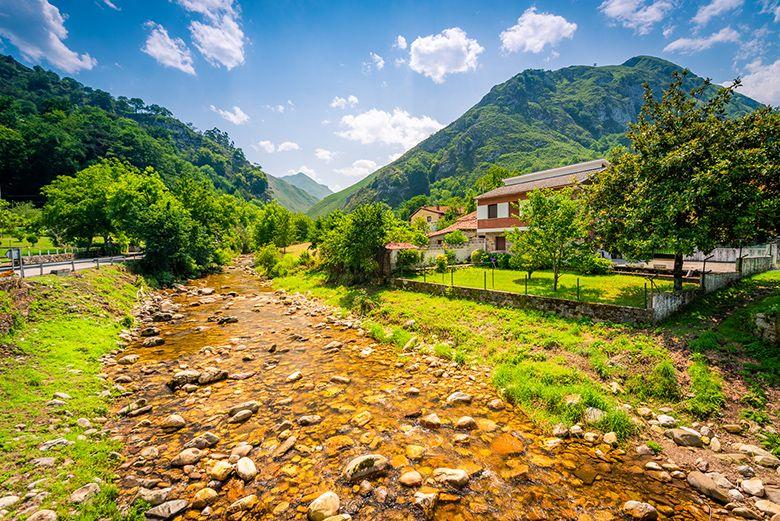
There is no doubt that all the gadgets and inventions related to wood have an outstanding place in Piloña. And one of the places where you can feel this essence and presence of the traditional is in Espinaréu, where dozens of hórreos and paneras are scattered throughout the village, composing with immense authenticity antojanas and caleyas.
Furthermore, the power and beauty of the river Espinaréu as it passes through this village creates unique, idyllic-looking spots.
Espinaréu is the perfect rural refuge: to rest, to connect with nature, to go on routes, or to enjoy authentic Asturian cuisine under a hórreo (granary)?
Whatever the case may be, if you go to Piloña, this village is one of your unmissable appointments.
La Pesanca, the ideal refuge for xanas
La Pesanca is a place from another world. A fantastic universe at the foot of the river Infierno, which in this place is a backwater in the form of a pool with a waterfall.

Bridges, walls, rocks and artfully shaped trees are covered with mosses and lichens. You will find yourself directly in the realm of the xanas. What's more, real or imaginary, you will discover them amidst the mists of dawn and the glimmer of the sun as the day breaks.
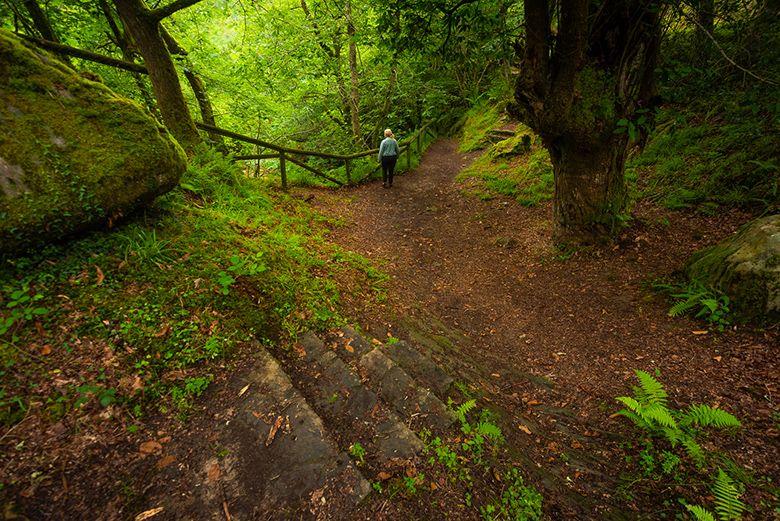
And in the meadows of the surroundings, there is a splendid recreational area for the enjoyment of visitors. This is also the starting point of the mountain route to Vizcares peak, the highest peak in the council of Piloña.
So La Pesanca is the perfect refuge not only for the xanas, but also for you. Peace and tranquillity in abundance, in a unique setting.
The Borines Valley: the purity of the water and the Sidrón Cave
The Borines Valley is one of the most beautiful and emblematic of the entire council of Piloña. It is a landscape that will captivate you in a setting that is the cradle of one of the most famous and classic mineral waters of Asturias: Borines.
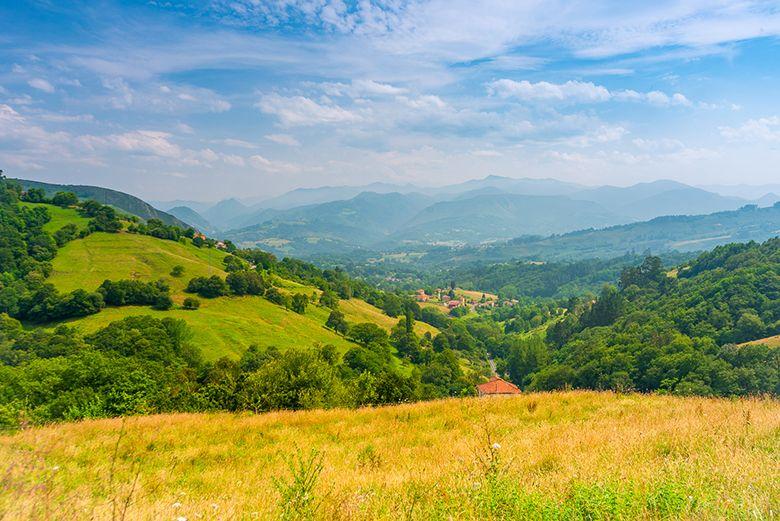
Green slopes from which villages hang, a mythical river, and a lot of history. This is what this valley is like, hanging down from Monte Sueve, as if it wanted to cling to eternal life.
But the Borines valley also hides a great treasure. A treasure unveiled for the knowledge of contemporary mankind 25 years ago: the Sidrón Cave, the richest site in the world to study the DNA of the Neanderthals.
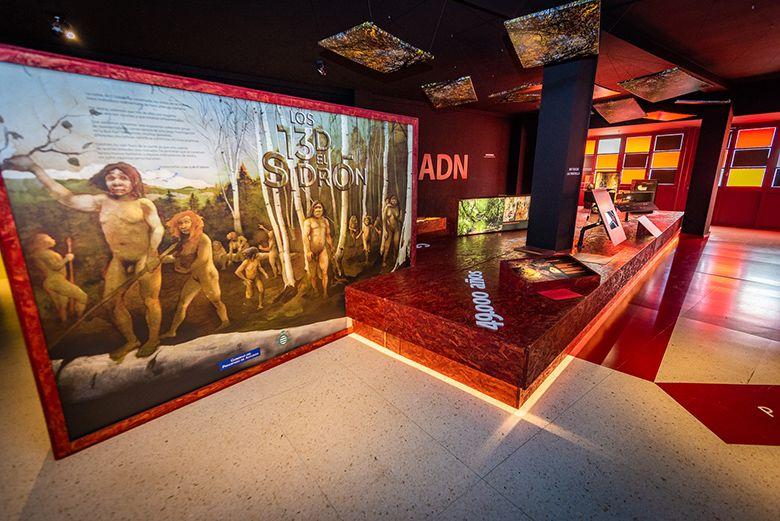
This cave, which is not currently open to visitors due to the research being carried out, is located in a beautiful village in the Sueve valley, Vallobal, which is well worth a visit.
In short, Borines is a valley not to be missed on your trip to Piloña.
Villamayor, a thousand-year-old parish in the heart of Piloña
Bathed by the waters of the Piloña, Villamayor is a thousand-year-old parish with a brilliant history, as can be seen in its main houses, in its church, in its old monastery of Santa María, in its granaries and granaries, or in its Indian houses.
The Oculatio tombstone on the façade of Casa Pastrana, or the façade and apse of the Monastery of Santa María, will give you an idea of the tradition that the streets, squares and houses of Villamayor exude.

A walk through this place will take you from Romanesque to Indian architecture in just a few metres. A curious and fascinating mixture.
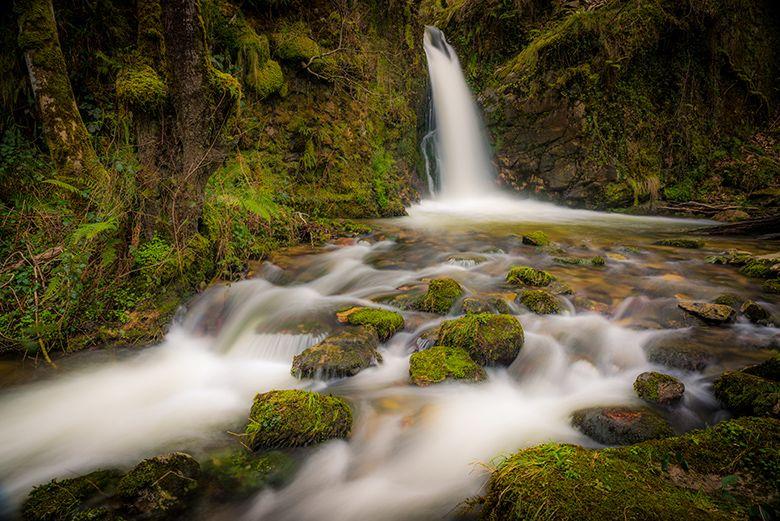
And if you fancy a dip in nature, from Villamayor itself, just over two kilometres away, on a simple route, you will find the famous chorrón, a beautiful waterfall, in a magical setting, with a recreational area included.
Espineres, the sheepfold of the asturcones in the wild
The Sueve is, without a doubt, a mountain with a charm. It has such a seductive 'something' that makes you fall in love with both its landscapes and its landscapes.
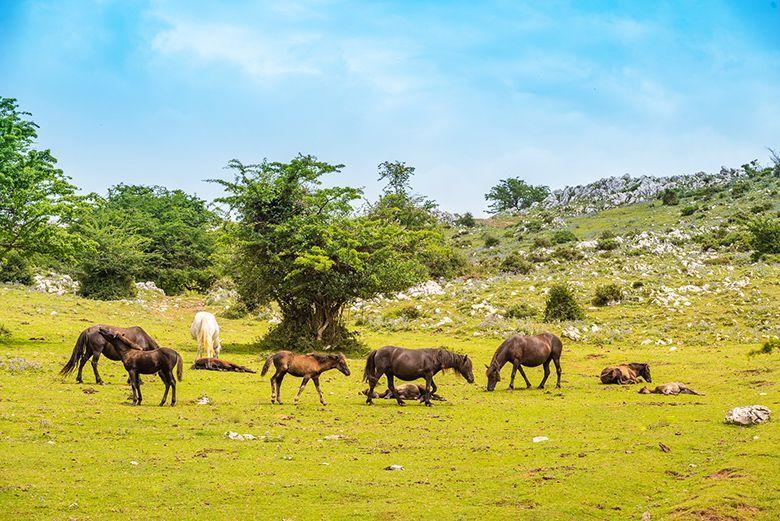
And there is a place in the Sueve that multiplies its magic exponentially from year to year: the Espineres sheepfold, whose name is due to the many hawthorn trees that populate it and give it a distinct air...
Between sinkholes and trees, in the middle of a karstic landscape, the Asturcones live in freedom, in total peace and quiet, and you will be happy to contemplate them on their walks and games, or in their incredible naps in the open air.

In Espineres, time stands still and brings to life a myth of Asturian history and identity: the Asturcón pony, which has survived for centuries and centuries, helping mankind in its hard journey of survival, carrying out the toughest jobs, with an exemplary capacity for adaptation and suffering.
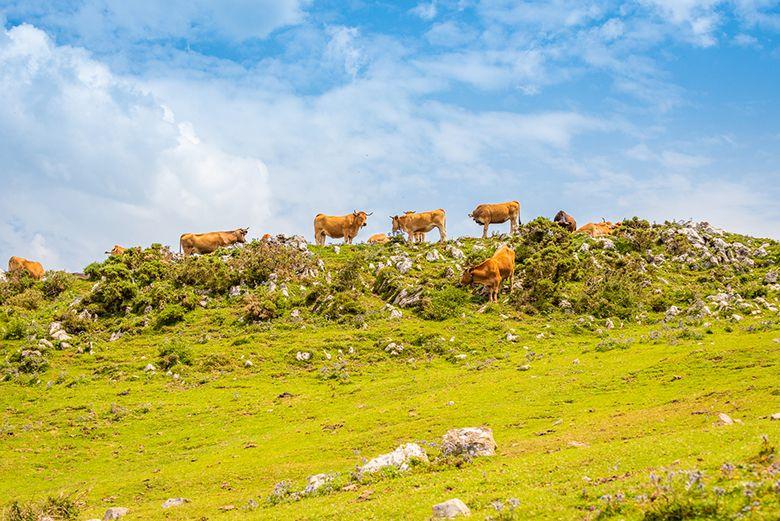
It is a pleasure to see them in harmonious coexistence with the cows, blending into the landscape as if they had been there waiting for you for over a thousand years.
To see them in all their splendour, it is highly recommended that you attend the Asturcón Festival, declared to be of National Tourist Interest, which takes place every August in the Espineres sheepfold.
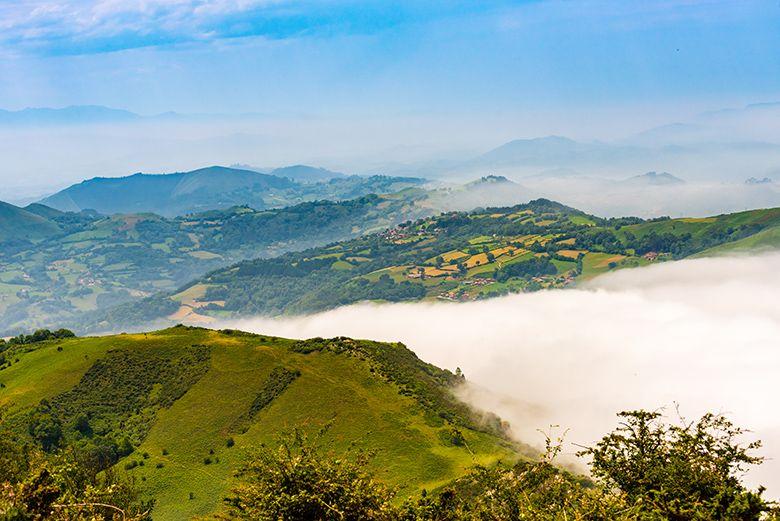
Definitely, the Sueve mountain range, with its two crosses - that of the Picu Pienzu, the highest point of this mountain - and that of María Mingo, a shepherdess who died and is buried there, will become a fantastic reality for you.
Mount Cayón, the Piloña watchtower of the Picos de Europa
The ascent to Monte Cayón, another of Piloña's natural landmarks, is a marvel, especially for the views that appear before your eyes.
Villages and mountains invade your retina with absolute naturalness: the mountains of Lodeña and Incós, Cabranes, Nava, the valley of Ques, Pintueles, or the Sierra del Sueve itself. And from the highest point, a spectacular view of the Picos de Europa.
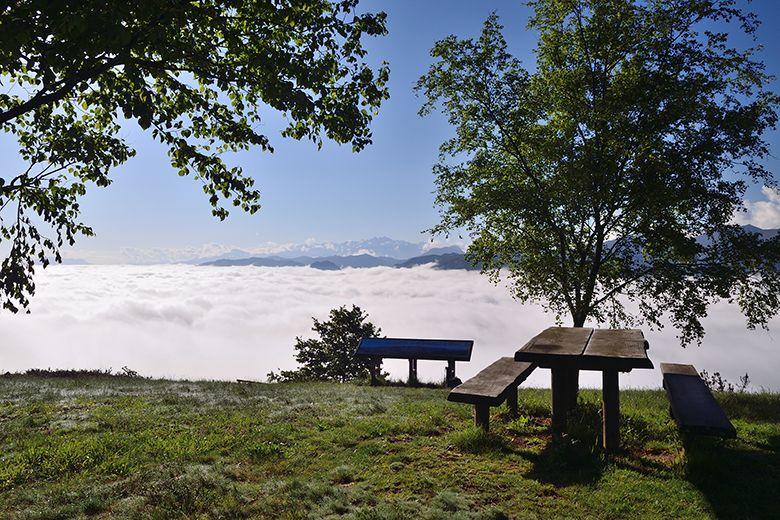
And if you want to stay a while and enjoy the scenery, there is a comfortable recreational area. And if your thing is flora and fauna, you will have a great time, as the panorama is very rich and varied: pine and eucalyptus trees, birch trees, alder, hazel and ash forests, and in terms of fauna, there are wild boars, roe deer, fallow deer and deer.
Oh, and if you do decide to climb Mount Cayón, one of the best options is to do so from the pretty village of Pintueles, where it is also advisable to take a walk.
Coya, the most canoe-loving village
Of the many beautiful villages and parishes in Piloña, Coya is the one with the longest tradition and deepest roots in the sport of canoeing. And this is due to a romantic story that took place in this place in the first decades of the 20th century: Dionisio de la Huerta, the founder of the Fiesta de las Piraguas or International Descent of the Sella, spent all the summers of his childhood and youth there. Dionisio's father was a native of this village, and from there he had gone to the Americas at the end of the 19th century.
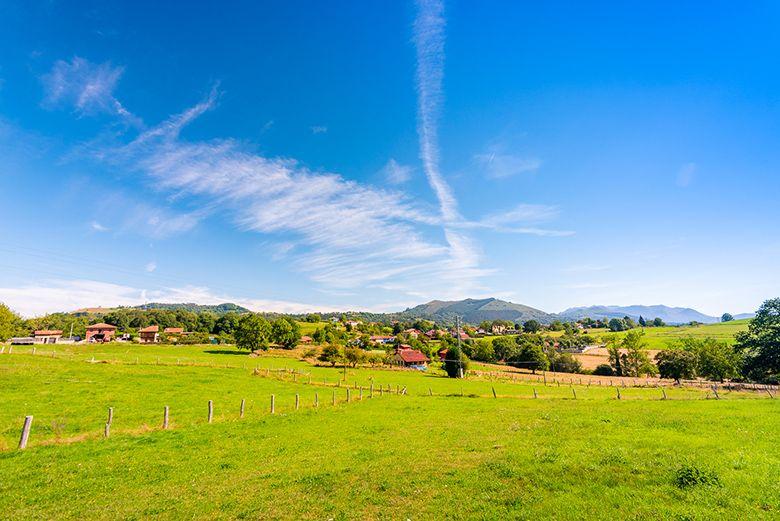
Dionisio de la Huerta used to bathe every summer in the river Piloña, specifically in a well known as the Ravión, where he practised sport, until one fine day he decided to go canoeing with some friends to Arriondas, and then on to Ribadesella. This was the birth of one of the most important river rafting sporting events in the world, and a festival which, to this day, is the only one declared of International Tourist Interest in Asturias: the Fiesta de las Piraguas (Canoe Festival). And so canoeing was also born in Spain.
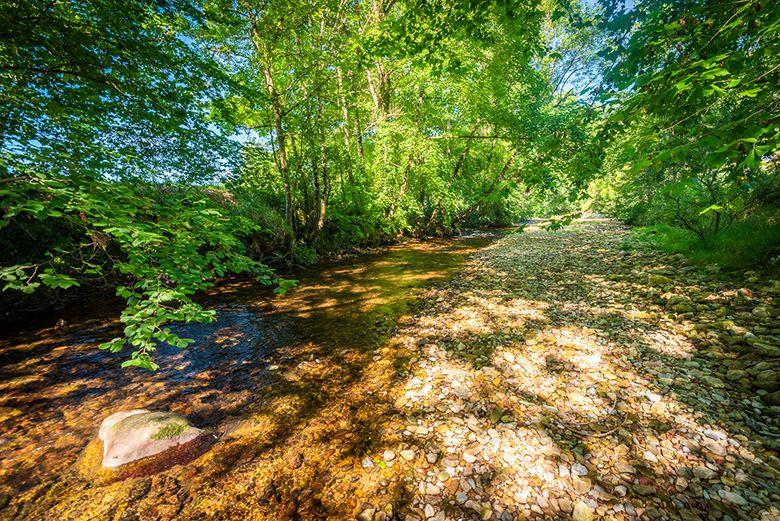
Coya has, therefore, the immense honour of being the origin of such a feat, and when you go for a walk there, you will be able to contemplate the beautiful scenery of the river Piloña, and the former family home of Dionisio de la Huerta.
Traditional Asturian houses coexist with some Indian houses in Coya, and the history and constant flow of the river Piloña is always present.
Areñes, the magic of a legendary village
One of those villages in Piloña that you will find unforgettable is Areñes. The good treatment of the villagers and the simplicity of the place are two of the attractions of a place where they work incessantly to recover the collective memory, preserving its old schools and its fountains and washing places in pristine condition.
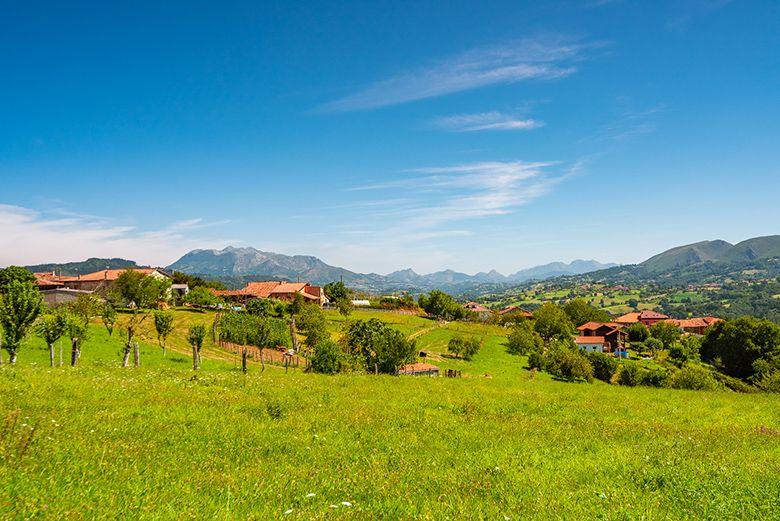
Furthermore, Areñes, located in the Fontoria river valley, has some unique traditions in Asturias, such as the night-time torchlight procession, which is held during the San Roque festivities.
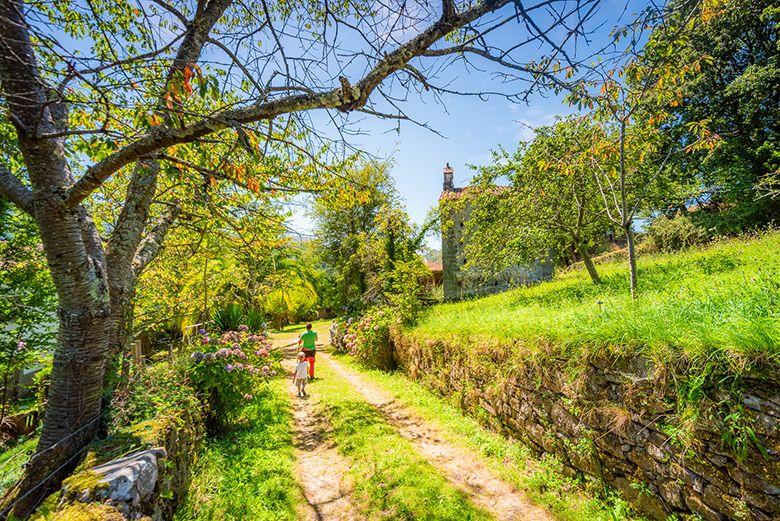
So, to the charm of its landscape and its surroundings, Areñes adds the immense value of its history and its many anecdotes.
One of these curious stories is the legend of the devils of La Trapiella, an 18th century mansion on the outskirts of the village, where popular memory recalls that there was a group of very playful devils - bowlers to be precise - who used to have fun in a golden bowling alley practising this sport, who used to have fun in a golden bowling alley practising this sport, which is so deeply rooted in the east of Asturias, until one day the people who lived in the house decided to lock them in a room so that they would not make any more noise...
Areñes is another of those unmissable places on your journey through Piloña.
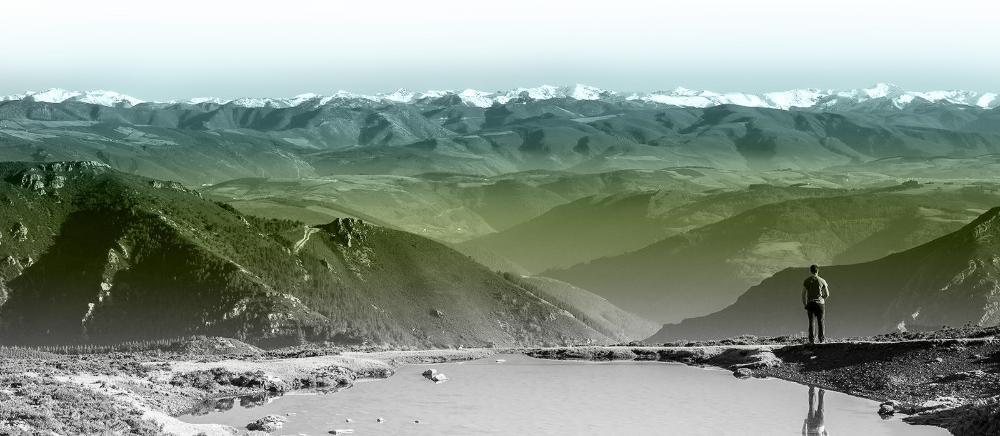
Subscribe to our newsletter and take advantage of offers, discounts, and news
Subscribe

